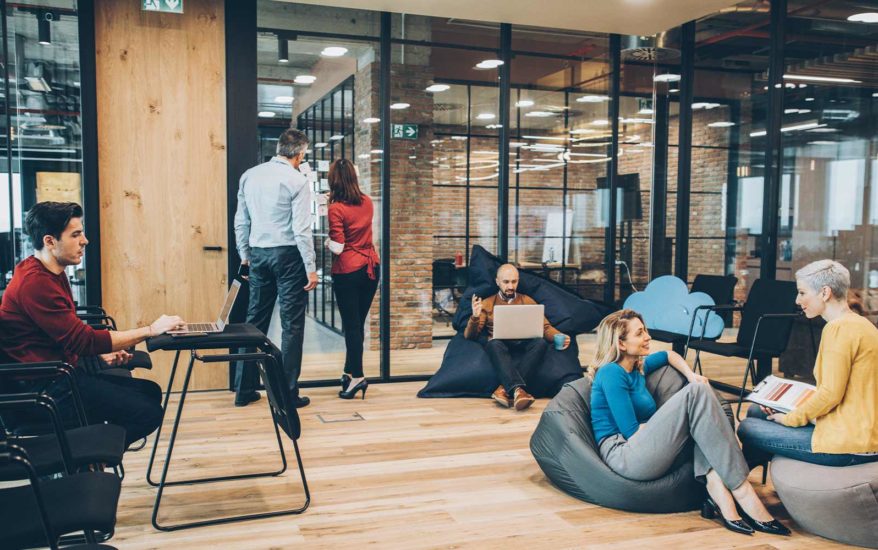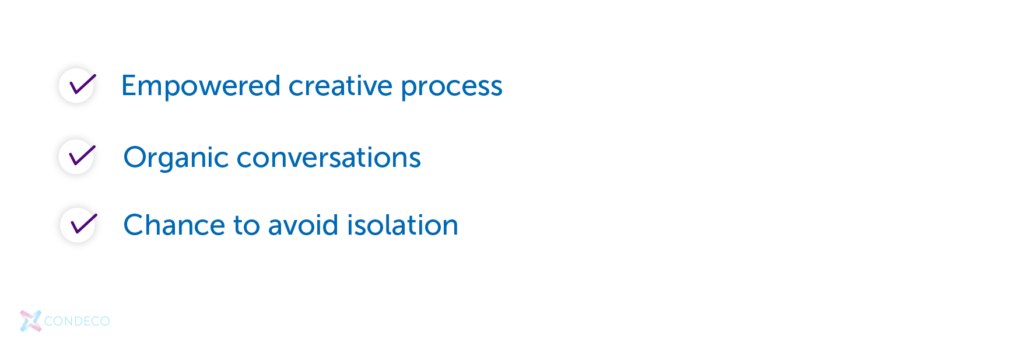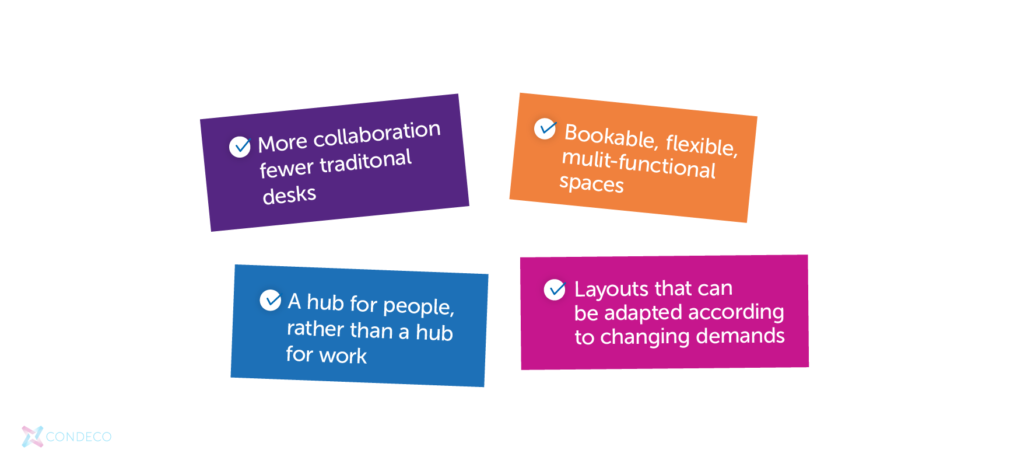
Flexible work is changing the business world, perhaps forever. But the change has happened so suddenly that it can be hard to appreciate just how widespread the change is, or how far the ramifications are spreading.
The prevalence of the shift has been underlined by the results of our recent report into attitudes around hybrid working. We found that less than half of employees’ working arrangements are the same as they were before the start of the pandemic, and only 44% spend their full working week in the office.
Interestingly, hybrid working, which blends home and office-based work has emerged as the most favored option among employees. Of those already working to a hybrid arrangement, 85% want to keep it that way, while only 24% of those who are fully remote want to stay working from home all the time.

All these changes to how, where and when people work, and what they want to get from their working lives, will heavily influence what the offices of the future will look like. In this blog, we’ll investigate the factors that will play a part in shaping changes to the office environment, and the key trends that are likely to emerge.
How to make the perfect hybrid workplace
- Clear WFH guidelines
- Scheduled remote calls/collaborative online meetings – scheduling system
- Encourage flexible hours
- Focus on work-life balance to increase productivity and happiness
- Create a collaborative office that staff want to work from
What do employees want from their office space?
With hybrid working now prioritized by employees, it’s important to understand exactly what they want from the office. While many want to break away from the monotony of living and working from home, they still need to feel like the time and money of commuting to the office is worth it.
That’s why it’s so important to clearly define the role that the office will play within a hybrid or flexible working model. Three particular use cases stand out:

- Empowered creative process: employees want to feel that their opinions are valued and that they can play an active role in creative discussions. This demands effective collaboration that ideally takes place in person
- Organic conversations: the bond-building and knowledge sharing that takes place through chance conversations, such as those ‘over the watercooler’, are lost when employees work remotely. Enabling these in the office can help improve overall skill sets and foster a more positive company culture
- Chance to avoid isolation: all employees have missed out on chances to socialize in and out of work over the course of the pandemic. It’s been particularly tough on many younger employees in smaller or shared accommodation, who have had to live both their professional and personal lives in a confined space for long periods of time. The office can serve as a means of escaping isolation, enjoying face-to-face contact and being inspired by their co-workers.
What’s in store for the future of our offices?
All of the above will play a part in determining how offices change in the months and years ahead. While every business is different, and there are no hard and fast rules about what an office should look like, these four themes indicate the general direction of travel:

- More collaborative spaces, fewer traditional desks: with the office becoming more of a destination for collaboration, it’s vital that offices have enough capacity for co-working. That means not only increasing the number of meeting rooms, but also less formal collaboration spaces like breakout zones.
- Bookable, flexible, multi-functional spaces: as well as availability of a variety of different spaces, employees need easy and reliable access to them, too. A workspace management solution can allow them to search for and book the spaces they need for suitable times, even from home, so that they can plan days in the office with confidence.
- Layouts that can be adapted according to changing demands: flexibility should extend to the office itself, and nothing about the office environment should be set in stone. Reviewing demand and supply of workspaces, how they’re used, and patterns in employee bookings can be driven by analytics tooling. This information can help suggest how evolutions can be made to the office layout over time.
- A hub for people, rather than a hub for work: ultimately, the first three points can all be grouped together under one theme, which is that the whole philosophy of the office needs to change. No longer should it be considered a place where work is the primary focus. That focus should move onto people, with work simply the by-product that comes from a happy, motivated, productive and collaborative workforce.



